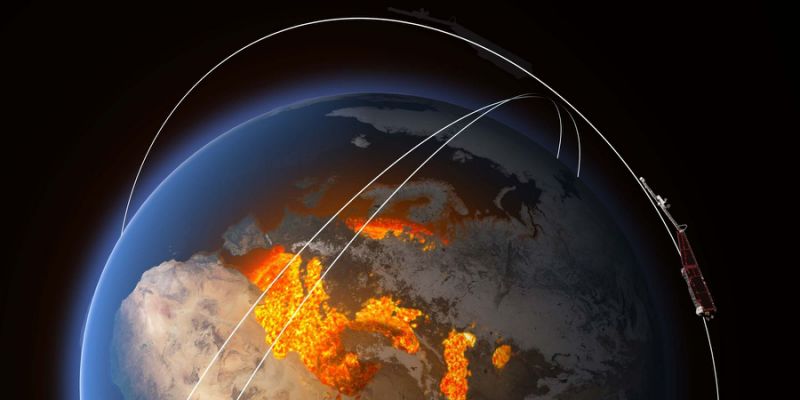Our Magnetic Field Is Acting Sketchy Again

Earth’s protective magnetic field is weakening in a region across the South Atlantic.
Researchers have been using the European Space Agency’s Swarm satellite constellation to monitor changes in Earth’s magnetic field.
Fortunately, there’s no immediate cause for alarm, researchers say, though some satellites and spacecraft flying over the weakened region may malfunction.
Earth’s magnetic field is shaking things up once again.
Sloshing liquid iron in Earth’s outer core-which lies roughly 3,200 feet below us-generates our planet’s protective magnetic field. It guards against solar winds that ferry damaging charged particles. It also guides the navigation systems that direct everything from smart phones to satellites.
In recent decades, our magnetic field has been changing. We know, for instance, that the magnetic north pole has been shifting at record speed in recent years. Now, scientists using the European Space Agency’s (ESA) Swarm satellites are monitoring a weakening in Earth’s magnetic field in a region that stretches from Africa to South America. They’ve dubbed it the “South Atlantic Anomaly.”
Scientists measure the strength of Earth’s magnetic field, or its magnetic intensity, using a unit called nanoteslas. Between 1970 and 2020, the minimum magnetic intensity in the anomalous region in the South Atlantic has plummeted from 24,000 nanoteslas to 22,000 nanoteslas, according to an ESA press statement.
This weak patch in the magnetic field has also expanded, stretching west toward South America at a rate of about 12 miles per year. Recent measurements taken by the Swarm satellites in the past five years reveal it may actually be splitting in half.
The ESA launched its Swarm satellite constellation in November 2013. Since then, it has revealed key secrets about Earth’s mysterious magnetic field. The constellation is made up of three identical, trapezoid-shaped satellites. Each 29-foot satellite is packed with sensors that measure Earth’s magnetism.
There’s an instrument that measures incident ions along the spacecraft’s orbit, as well as a 13-foot-long boom, which has a vector field magnetometer and three startrackers attached at the halfway point. To ensure “magnetic cleanliness,” there’s a scalar magnetometer at the tip of the boom that captures data free of electrical interference from the main section of the satellite.
“The new, eastern minimum of the South Atlantic Anomaly has appeared over the last decade and in recent years is developing vigorously,” Jürgen Matzka, of the German Research Centre for Geosciences, said in a statement. “The challenge now is to understand the processes in Earth’s core driving these changes.”
Earth’s magnetic poles have shifted throughout Earth’s history. We know they’ve even swapped places at a rate of about once every 250,000 years. The last switch occurred approximately 780,000 years ago. The development of the South Atlantic Anomaly doesn’t mean we’re headed for a pole reversal, experts say, so there’s no need to panic.
This could, however, pose a problem for satellites and spacecraft in the area. Because the magnetic field is weaker in this region, spacecraft are more susceptible to charged particles that could damage equipment and spur malfunctions.
https://in.news.yahoo.com/magnetic-field-acting-sketchy-again-153000885.html
